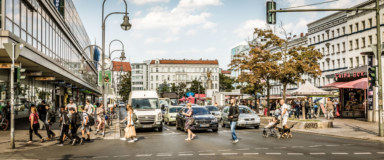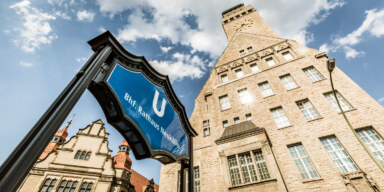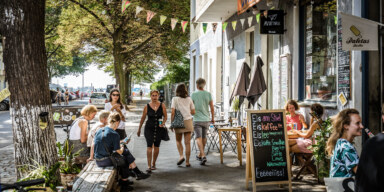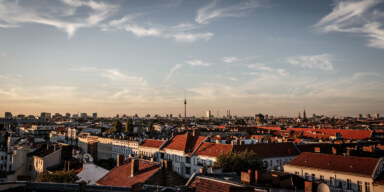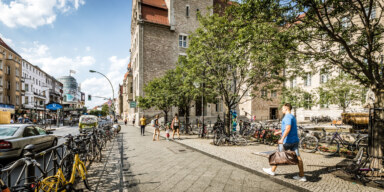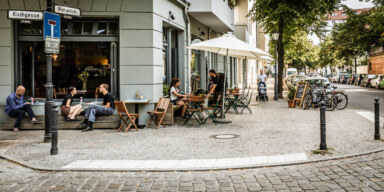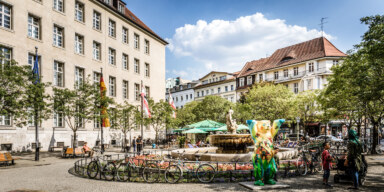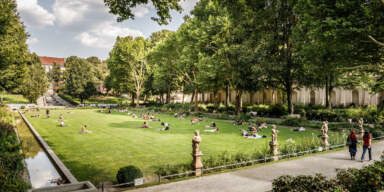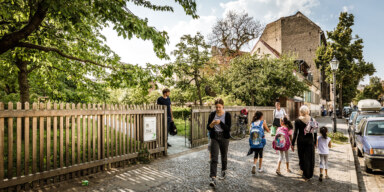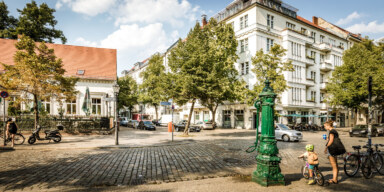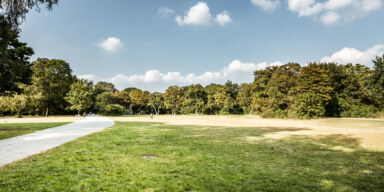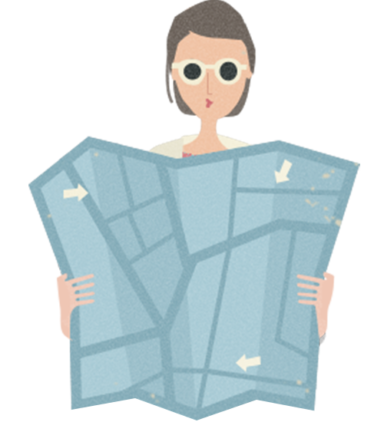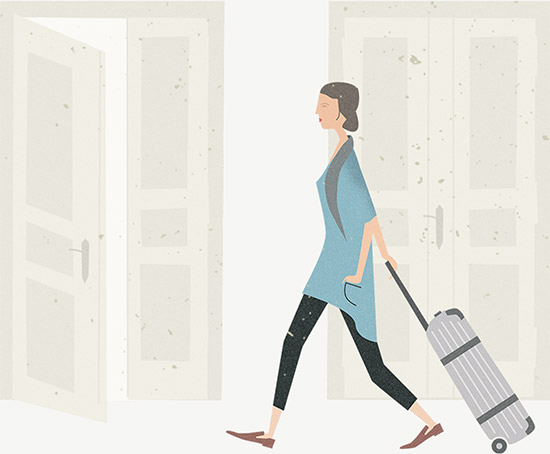Neukölln
The surprising one
”Poor but sexy“ were the two attributes once used by Mayor Klaus Wowereit when talking about Berlin. His description holds particularly true for Neukölln. Very sexy. The district has its own wayward charm, unpretentious, surprising, chaotic and sometimes a little shabby. There is no neighbourhood in Berlin that has changed so much so quickly. It was still a deprived area in the late Nineties and sometimes called “Germany’s biggest welfare office”. The no-go area of 20 years ago is today a district with a future. Meanwhile, Neukölln has become a fully-fledged entertainment area: between Landwehrkanal and Sonnenallee, hip bars, cafés and restaurants pop up on a weekly basis. The hubbub in the streets is in English, French and Spanish, it feels like a new beginning is in the air. As in nearby Kreuzberg, it is all about the mixture. Round-the-clock opening hours, night turned to day, and the overcrowded cafés suggest that no-one here needs to go to work. Among freelancers and young people the district counts as a great place to live. Clubs and galleries make the area around Weserstraße a trendy art district.
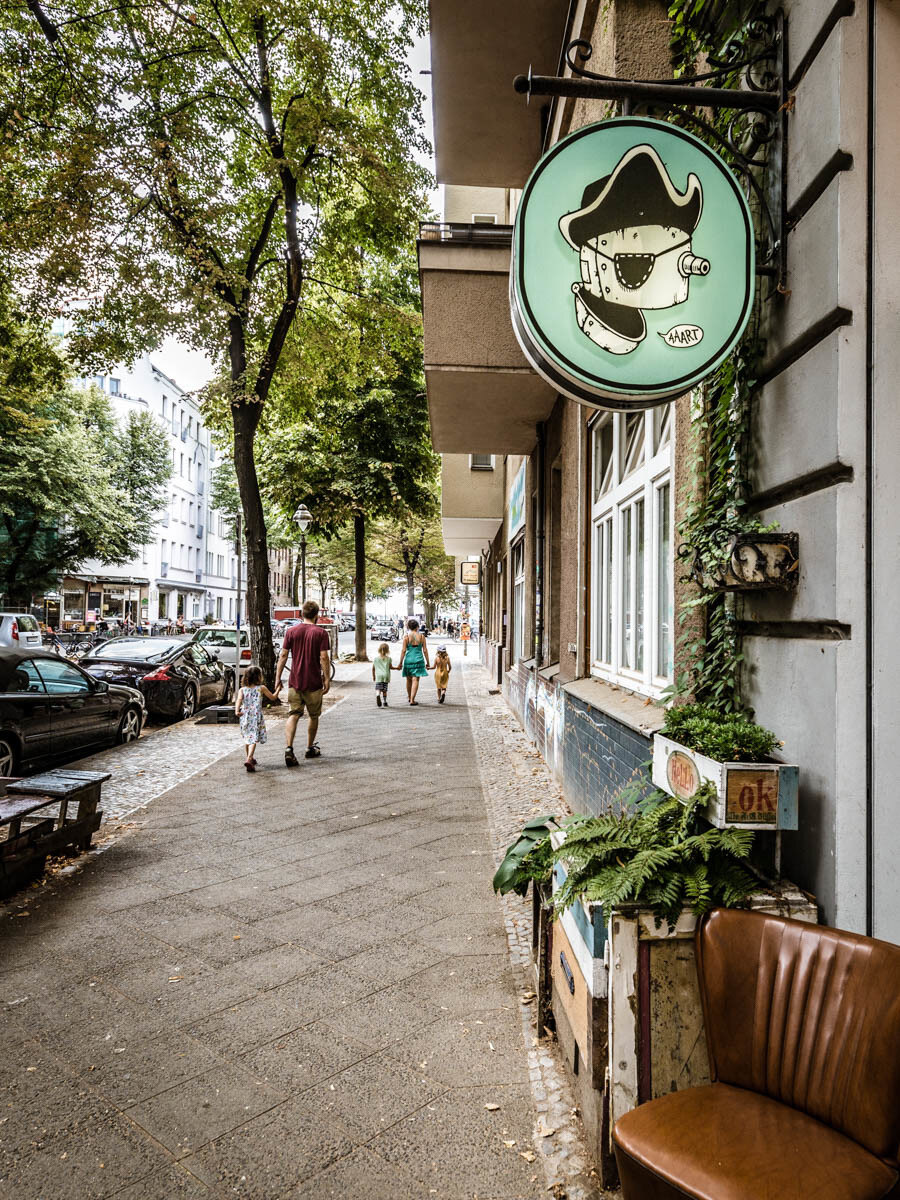
» The district has its own wayward charm, unpretentious, surprising, chaotic and sometimes a little shabby. «
Neukölln is a new heartland for artists and creative workers. It has entire blocks of gentrified 19th century building stock. Neukölln is compact, and one of the most densely populated districts in Berlin.
Given its proximity to Kreuzberg, some call it “Kreuzkölln“. The rents are still lower than those of Kreuzberg or Prenzlauer Berg. Students, hipsters, immigrants, young families and artists live side by side. Culture and subculture. Shops and bars decorated in vintage style. A good place to meet people is the Turkish Market on Maybachufer: colourful, bizarre, high-spirited. Crowds mill around on Tuesdays and Fridays between fresh herbs, jewellery, bread, flowers, hardware, fruit, rolls of fabric, lingerie and handbags.
Neukölln has always been a typical Berlin residential area. You can get to Charlottenburg, Mitte, Prenzlauer Berg or Friedrichshain on public transport in just 15 minutes. It is Berlin’s typical mixed bag: people from 160 nations and all walks of society, students, young families, entrepreneurs, unemployed people, artists and – extended Arab families. Still to be found here are spacious apartments in older houses, floor space in former factories, rooms in commercial properties available at a reasonable rent.
Ever since the closure of Tempelhof Airport the Schillerkiez especially has developed into a popular residential area. Its axis is the Schillerpromenade with its park-like green centre strip. Around the turn of the century wealthy citizens built rows of ornate art-nouveau houses here. The circular Herrfurthplatz forms the centre of the Schillerpromenade. Here, coming home offers low-cost apartments in older houses with a view of Genezareth Church. The church spire had to be partly removed during the 1948/1949 Berlin Blockade because it was too dangerous for the low-flying cargo aircraft on their descent into Tempelhof. Immediately next to the church is the “Selig” – an altogether different place. The former church café with its long tables and innovative cuisine is now an insider’s tip for restaurant goers.
A favourite recreation area for the Neuköllners is Volkspark Hasenheide. Where the Great Elector used to hunt hares, today’s police hunt petty criminals. Where Friedrich Ludwig Jahn, the “Father of Gymnastics” once set up his first sports field, people now spend balmy summer nights drinking in a beer garden. And a disused US Army shooting range is now a highly popular, romantic outdoor cinema seating 1000 people.
In the festive season, things get romantic at the traditional Christmas market on Richardplatz. Wedged between Sonnenallee and Karl-Marx-Straße lies a quarter called Alt-Rixdorf, the original Neukölln village. Here, in 1737, Friedrich Wilhelm I, known as the "Soldier-King", created homes for 18 families from Bohemia whose descendants still live in the small town houses. The rural flair of the area also inspired Volker Schlöndorff who used it as a setting for his film “The Tin Drum”. Ancient trees, cobblestones and the Bohemian cemetery could not be more in contrast to the less than charming Karl-Marx-Straße with its cheerless phone shops and takeaways. What appears ironic is, however, part of this district’s character: elegant Art Nouveau houses and stucco-decorated façades beside bland new-build and unpretentious blocks of flats. Neukölln is all of the above.
» Meanwhile, Neukölln has become a fully-fledged entertainment area: between Landwehrkanal and Sonnenallee, hip bars, cafés and restaurants pop up on a weekly basis. «
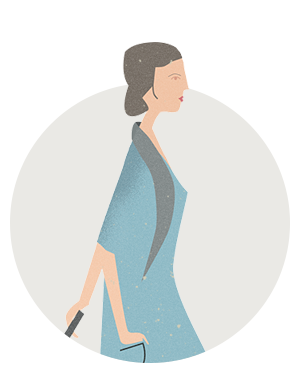
Renting an apartment – simple and secure
We at coming home will do our utmost to support and advise you. Our website provides you with a wealth of useful tipoffs for your apartment search, and tells you more about our free-of-charge services.
Infos for tenants
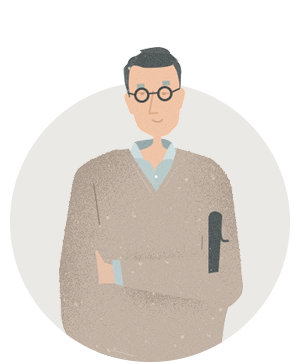
Secure lettings
If you wish to offer a furnished property for rent we are at your side throughout the tenancy process and ensure you get the best possible advice and support.
Infos for landlords

Magazine
Care to find out how other Berliners live? Read our series of personal home stories and get to know some extraordinary habitats and their creative residents in our magazine: “How people live Berlin”
Magazine
